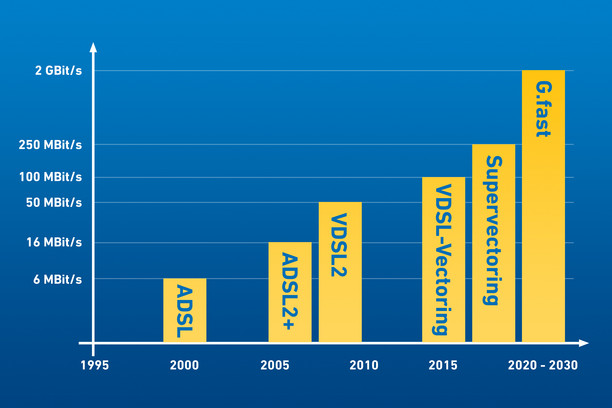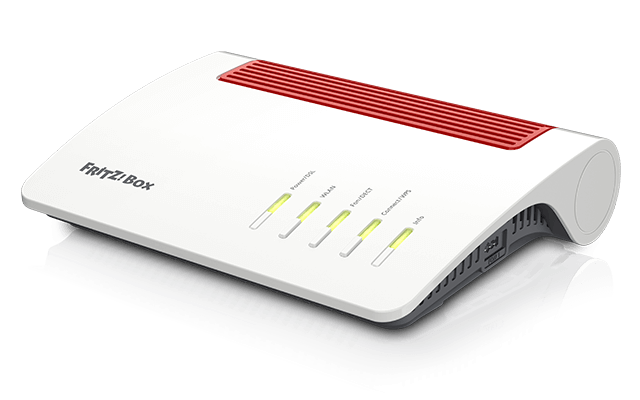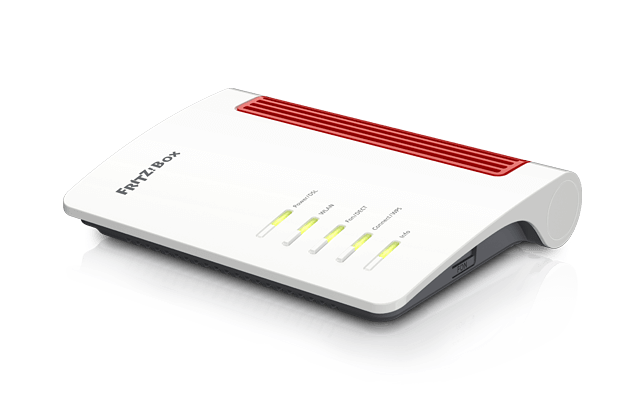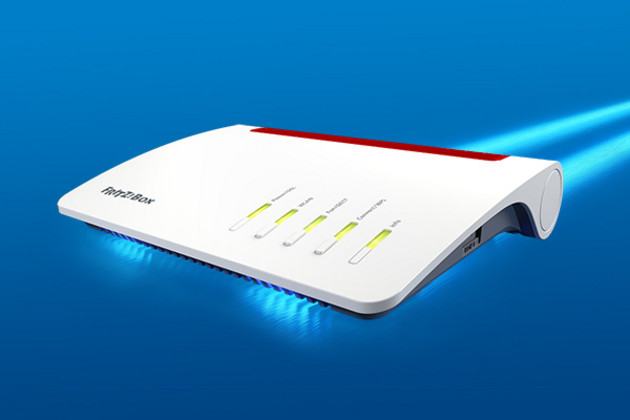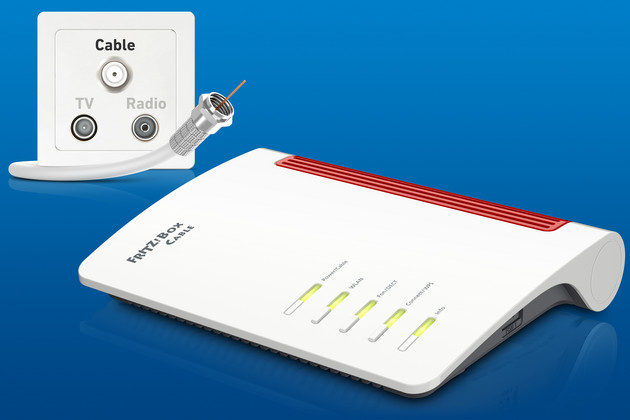AVM explains connection types: DSL
AVM Content

DSL, mobile, cable and fiber optics: FRITZ!Box runs on every connection. But what are the differences between the individual connection types? This guide series provides you with an overview. In this article we take a deep dive into DSL.
The beginning was… slow
DSL (Digital Subscriber Line) is a collective term a family of technologies for data transfer at higher transmission rates. Before Deutsche Telekom offered the commercial first ADSL services in early 2000, people went online either with a 56k dial-up modem (with perhaps the most famous dial-up sound ever) or via ISDN (64 kbit/s; with 128 kbit/s channel bonding). DSL uses frequency bands that are in a different range than those used for telephony or ISDN. This technology also enables transmission to be optimized by distributing the data stream over different frequencies.
When it was launched, DSL promised download speeds of up to 768 kbit/s. Depending on the package, customers had a certain amount of online hours at their disposal each month. A flat rate that allowed unlimited surfing at a fixed price didn't appear until later. A look at the offerings of various DSL providers shows that a DSL connection with a bandwidth of at least 25-50 Mbit/s is one of the entry-level rates in 2019, and offers of 100 Mbit/s and more are becoming more and more common.
ADSL, VDSL, G.fast - the development at a glance
The first usable DSL standard was ADSL (Asymmetric Digital Subscriber Line). This standard is characterized by two features that are still characteristic of all DSL technologies today: Firstly, the simultaneous use of the internet line and landline, and secondly, the asymmetrical relationship between transmission and reception speed. The latter means that more bandwidth is available for download than for upload.
The aspect of distance
All of the various DSL technologies use copper lines for the last part of the transmission. These cables, also known as subscriber lines or local loop, terminate in a circuit switch housed in the local telephone exchange. The further away the connection is from the exchange, the lower the data throughput. This can result in slow connections, especially in more rural regions with few exchanges.
The following table provides an overview of the technological progress
|
ADSL |
ushered in the DSL era with a maximum transfer rate of up to 6 Mbit/s. |
|
ADSL2 |
is an enhancement to ADSL that was practically never used in some countries, e.g. Germany. Instead, they transitioned directly to ADSL2+. |
|
ADSL2+ |
started becoming more available in 2006. Service providers offered speeds of up to 16 Mbit/s. ADSL2+ is capable of doubling the frequency range of typical ADSL connections, ensuring better data rates and range. |
|
VDSL |
or very high-speed digital subscriber line, never caught on in Germany because of too short a range and incompatibility with ADSL technology. When people talk about VDSL, they usually mean VDSL2. |
|
VDSL2 |
is based on ADSL technology and is fully backward compatible. Transmission rates of up to 50 Mbit/s were a major reason for the success of VDSL2 in Germany. In addition, this technology offered more leeway in the allocation to the different services and the weighting of downstream and upstream speeds. |
|
VDSL2 vectoring |
achieves transmission rates of up to 100 Mbit/s. With more users comes an inevitable increase in data streams. These data streams transmit in specific frequencies that interfere or "crosstalk" with each other. Vectoring prevents this by sending a counter signal at the same time as the actual data signal, which balances out the crosstalk levels. Vectoring therefore effectively serves to ensure speed despite increasing numbers. |
|
Supervectoring |
is an optimized version of VDSL vectoring in which the frequency range for data transmission has been increased from 17 to 35 MHz. This allows even more frequency spectrums to be used in parallel without any problems. Supervectoring enables data streams of up to 250 Mbit/s. |
|
G.fast |
promises higher transmission rates of up to 2 Gbit/s by increasing the bandwidth. Since transmission runs on high frequencies, reliable coverage is limited to relatively short distances. The problem of crosstalk is becoming even more relevant, making vectoring indispensable. |
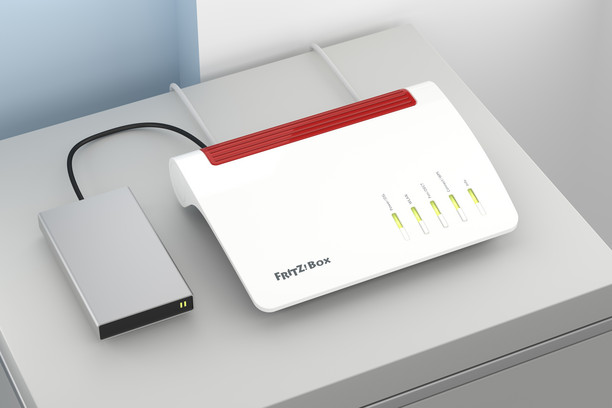
Necessary hardware
A DSL modem is required for DSL access. A FRITZ!Box also allows multiple computers or mobile devices to access the network, serves as a telephone hub, and comes with state-of-the-art multimedia features.
